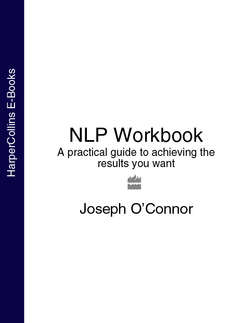Читать книгу NLP Workbook: A practical guide to achieving the results you want - Joseph O’Connor - Страница 20
Generative Learning
ОглавлениеThe other type of learning is generative learning or double loop learning. Generative learning brings our beliefs and assumptions about the issue into the feedback loop. Feedback from our actions leads us to question our assumptions. In the previous examples, the man might question why he is getting frequent headaches. He might find out that he needs to change his lifestyle or diet. He may also wonder about taking responsibility for his own health, rather than looking to the medical doctor to fix all his health problems.
The business organization might question whether it is worth investing in new equipment for a product that might be out of date in a year’s time. They might question whether they are in the right market and think about alternative products rather than assume they can continue to do what they have always done.
The basic questions to ask for double loop learning are:
Generative learning
‘What are my assumptions about this?’
‘How else could I think about this?’
‘How might my assumptions be contributing to the problem?’
‘How come this situation has persisted?’
| NEUROLOGICAL LEVELS |
Another model that is also helpful in thinking about learning and change has been developed by Robert Dilts from the work of Gregory Bateson. The model is called ‘neurological levels’ and is useful without being consistent or exhaustive (or even logical). It has been widely adopted in NLP thinking. The levels are as follows:
1 Environment: the where and the when
The environment is the place, the time and the people involved. You set the boundary on what to include. You may be successful only in specific circumstances or with particular people – ‘being in the right place at the right time’.
2 Behaviour: the what
Behaviour is what we do. In NLP terms, it includes thoughts as well as actions. Sometimes behaviour is difficult to change because it is closely connected to other levels. You see behaviour from the outside.
3 Capability: the how
Capability is skill – behaviour that is consistent, automatic and habitual. This level includes both thinking strategies and physical skills. Capability at an organizational level manifests as business processes and procedures. Capability is only visible in the resulting behaviour because it lies within you.
4 Beliefs and values: the why
Beliefs are the principles that guide actions – not what we say we believe, but what we act on. Beliefs give meaning to what we do. Values are why we do what we do. They are what is important to us – health, wealth, happiness and love. On an organizational level, businesses have principles they act on and values they hold. They are part of the culture of the business. Beliefs and values direct our lives, acting both as permissions and prohibitions on how we act.
5 Identity: the who
Identity is your sense of yourself, the core beliefs and values that define you and your mission in life. It is built throughout your life and is very resilient. We express ourselves through our behaviour, skills, beliefs and values, but we are more than all or any of these. In business, organizational identity is the business culture. It emerges from the interaction of the other levels.
6 Beyond identity: connection
This is the realm of ethics, religion and spirituality – your place in the world. For a business it means vision and how the business connects with the community and other organizations.
Neurological levels are not a hierarchy. They all connect to each other and all influence each other.
Neurological levels are useful for outcome setting. You can specify your outcomes by:
the sort of environment you want
how you want to act
what skills you want
what attitudes and beliefs you want to adopt
what sort of person you want to be
Outcome thinking itself is a skill or capability, an approach you take to all the decisions you make.
Outcome thinking aligns with your beliefs and values when you see how well it works and when it becomes an important principle in your life.
Outcome thinking reaches the identity level when you become the sort of person who moves towards what you want in your life instead of leaving it to chance or for other people to decide.
Neurological levels
